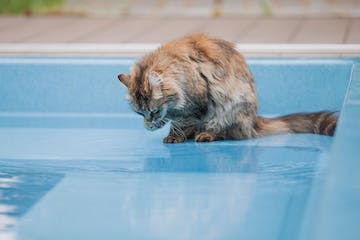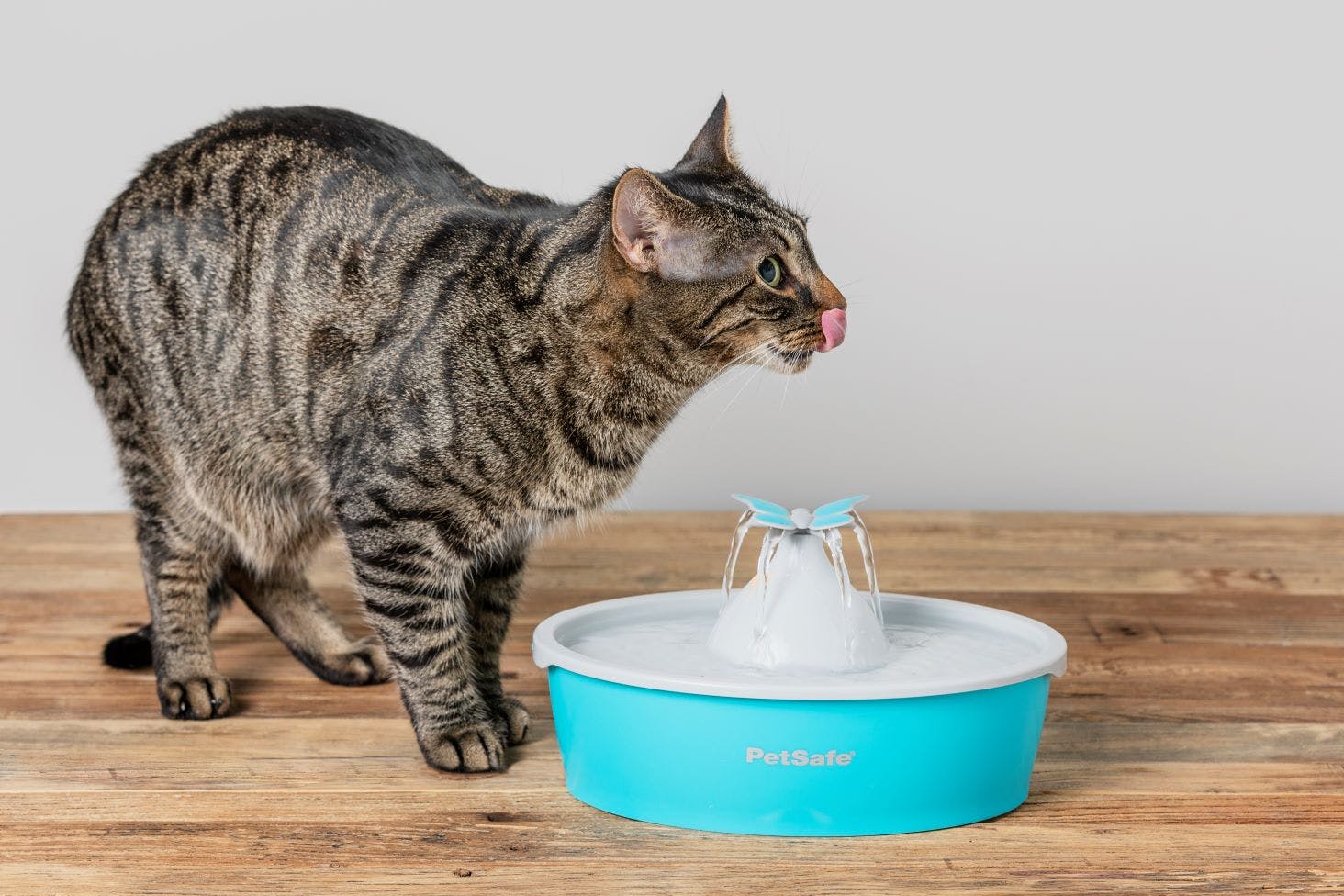Teaching Your Cat to Swim: A Guide to Water Safety and Cooling Techniques

Image Source: FreeImages

Introduction
Cats and water may not seem like a natural combination, but there are situations where teaching your cat to swim can be beneficial. Whether it's for safety reasons or providing a cool respite during hot summer months, introducing your feline friend to water can be a rewarding experience. In this comprehensive guide, we will explore various techniques and tips to teach your cat how to swim, while ensuring their well-being and comfort. We will also discuss alternative methods to keep your cat cool without water.

Understanding the Need for Cat Swimming Lessons
The Safety Issue
As responsible pet owners, our primary concern is our cat's safety. Many indoor cats, like my adventurous kitty Sassy, may show a keen interest in exploring the great outdoors. Unfortunately, this can sometimes lead to dangerous situations, especially if your sliding door opens directly to a pool area. Cats, when startled, might sprint out of the door and accidentally end up in the pool. Often, they resort to "panic swimming," frantically attempting to walk on water instead of swimming. This can quickly exhaust them, putting their lives at risk. By teaching your cat to swim, you can equip them with the skills needed to handle such situations and potentially save their lives.
Cooling Your Cat in Hot Weather
Another reason to introduce your cat to water is to help them beat the heat during scorching summer months. Cats with thick fur, like my black-coated companion, can struggle with overheating. While some cats may naturally seek out water sources, others may need a gentle introduction. By providing them with opportunities to cool down in a small pool or with water play, you can ensure their comfort and well-being.
Preparing for Cat Swimming Lessons
Before diving into the teaching process, it's essential to make necessary preparations and ensure a safe environment for your cat.
Safety Precautions
- Supervision: Always supervise your cat during swimming lessons to ensure their safety and prevent any mishaps.
- Warm Water: Maintain a comfortable water temperature around 90 degrees Fahrenheit to make the swimming experience pleasant for your cat.
- Water Quality: Maintain the chlorine levels in the pool just above drinking water standards to ensure your cat's well-being.
- Familiarity: If your cat has been around the pool area for some time, they may be less afraid of the water. However, don't assume they automatically know how to swim. Proper guidance and practice are still necessary.
Introducing Your Cat to Water
- Gradual Exposure: Start by introducing your cat to water in a controlled and calm environment. Begin with shallow water in a basin or a small pool.
- Positive Reinforcement: Associate water with positive experiences by offering treats, praise, and gentle strokes during the initial stages.
- Patience: Allow your cat to explore the water at their own pace. Some cats may take longer to feel comfortable, while others may show interest right away.
- Supportive Equipment: Consider using a cat-friendly life jacket or a floatation device designed specifically for feline swimmers. This can provide additional support and boost their confidence in the water.
Teaching Your Cat to Swim
Step 1: Creating a Positive Association with Water
To encourage your cat's interest in swimming, it's important to create a positive association with water.
- Water Play: Start by incorporating water play into your cat's routine. Gradually introduce them to running water in a controlled setting, such as a sink or a shallow basin. Observe their response and adjust accordingly.
- Engaging Toys: Provide stimulating toys, such as floating balls or toys that release treats when touched by water. This will help your cat associate water with play and fun.
"Making water play enjoyable for your cat will lay the foundation for successful swimming lessons." - Cat Care Expert
Step 2: Gentle Introduction to Swimming
Once your cat shows interest and comfort with water, you can begin the swimming lessons.
- Choosing the Right Location: Select a quiet and calm area where your cat can focus without distractions. A small, enclosed pool or a designated area in your backyard can provide the ideal setting.
- Supportive Environment: Place a ramp or steps in the water to help your cat enter and exit the pool effortlessly. This will provide them with a sense of security and make the learning process smoother.
- Gradual Entry: Begin by gently placing your cat in the shallow end of the pool, supporting their body with one hand. Allow them to explore and paddle around at their own pace.
- Encouragement and Praise: Offer verbal encouragement, gentle strokes, and treats as rewards for their progress. Positive reinforcement will help build trust and confidence in your cat.
"By introducing your cat to swimming gradually and positively, you can help them develop the natural instincts required for water safety." - Feline Behavior Specialist
Step 3: Building Swimming Skills
As your cat becomes more comfortable in the water, you can focus on building their swimming skills.
- Swimming Techniques: Gently guide your cat's movements by supporting their body and encouraging paddling motions. Allow them to develop their own swimming style without forcing any specific technique.
- Short Sessions: Keep the swimming sessions short initially, gradually increasing the duration as your cat becomes more proficient. Remember to monitor their energy levels and provide breaks when necessary.
- Consistency: Regular practice is essential for your cat to become a confident swimmer. Schedule frequent swimming lessons to reinforce their skills and maintain their comfort level in water.
Keeping Your Cat Cool without Water
While swimming can be an excellent way to cool down cats, some felines may not enjoy water activities. Here are alternative techniques to keep your cat cool during hot summer months:
- Cooling Pads: Invest in a cooling pad designed specifically for pets. Place it in your cat's favorite resting area to provide a comfortable and cool surface.
- Shaded Spaces: Create shaded areas in your home where your cat can retreat to escape the heat. Use curtains, blinds, or outdoor structures to block direct sunlight.
- Air Circulation: Ensure proper air circulation by using fans or air conditioning systems to maintain a cool environment.
- Frozen Treats: Offer frozen treats made from cat-friendly ingredients, such as pureed meat or fish, to provide a refreshing and tasty way to beat the heat.
"Understanding your cat's preferences and providing alternative cooling methods can help ensure their well-being even if they are not fond of swimming." - Veterinary Expert
Conclusion
Teaching your cat to swim can be a rewarding experience that not only enhances their safety but also provides a fun and interactive way to beat the heat. By following the gradual introduction techniques and ensuring a safe environment, you can help your cat develop the natural instincts required for water safety. Remember to always prioritize your cat's comfort and well-being throughout the swimming lessons. If your cat is not receptive to swimming, there are alternative methods to keep them cool during hot summer months. By incorporating these techniques, you can ensure your feline friend stays happy, healthy, and cool all summer long.
